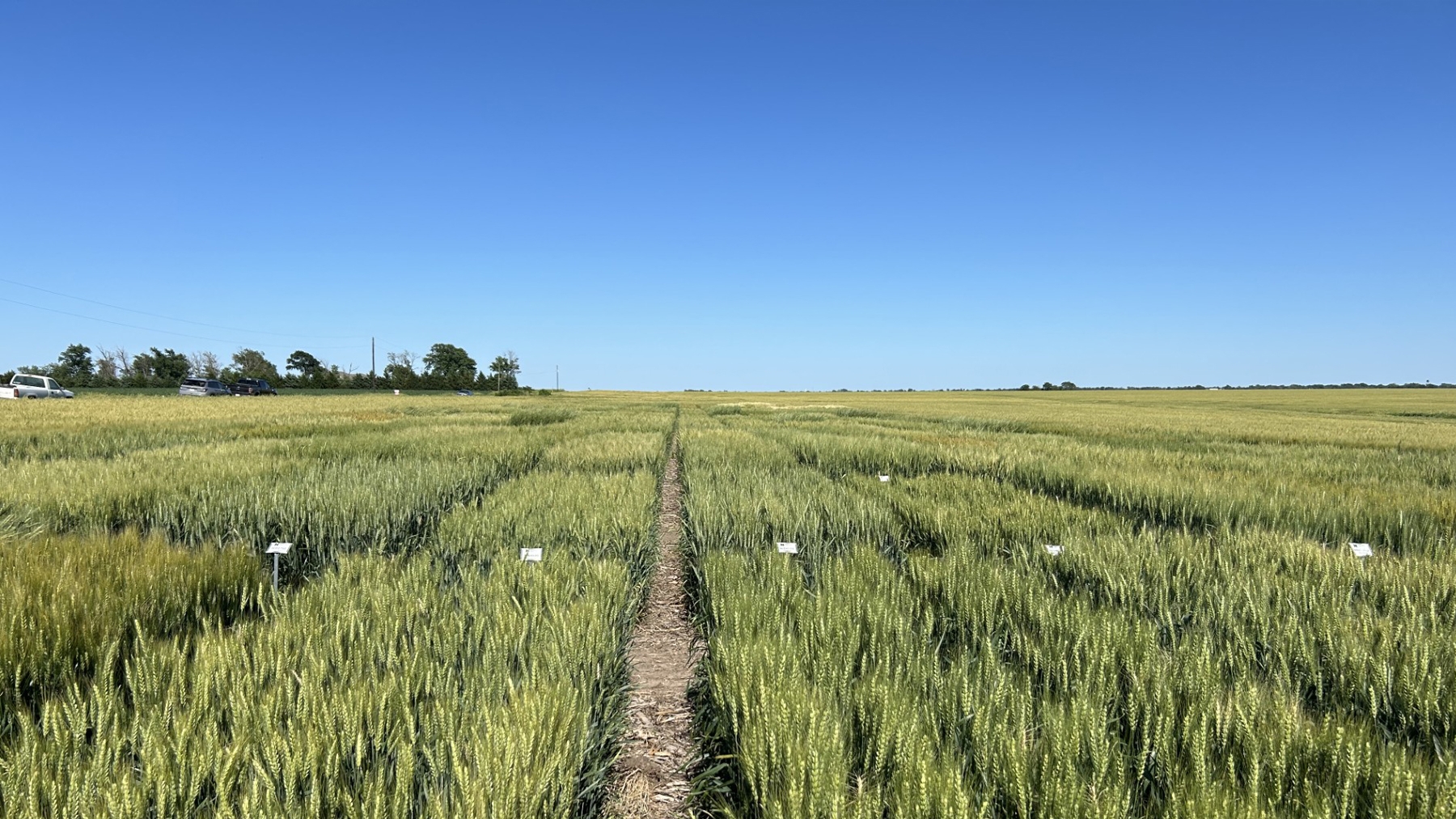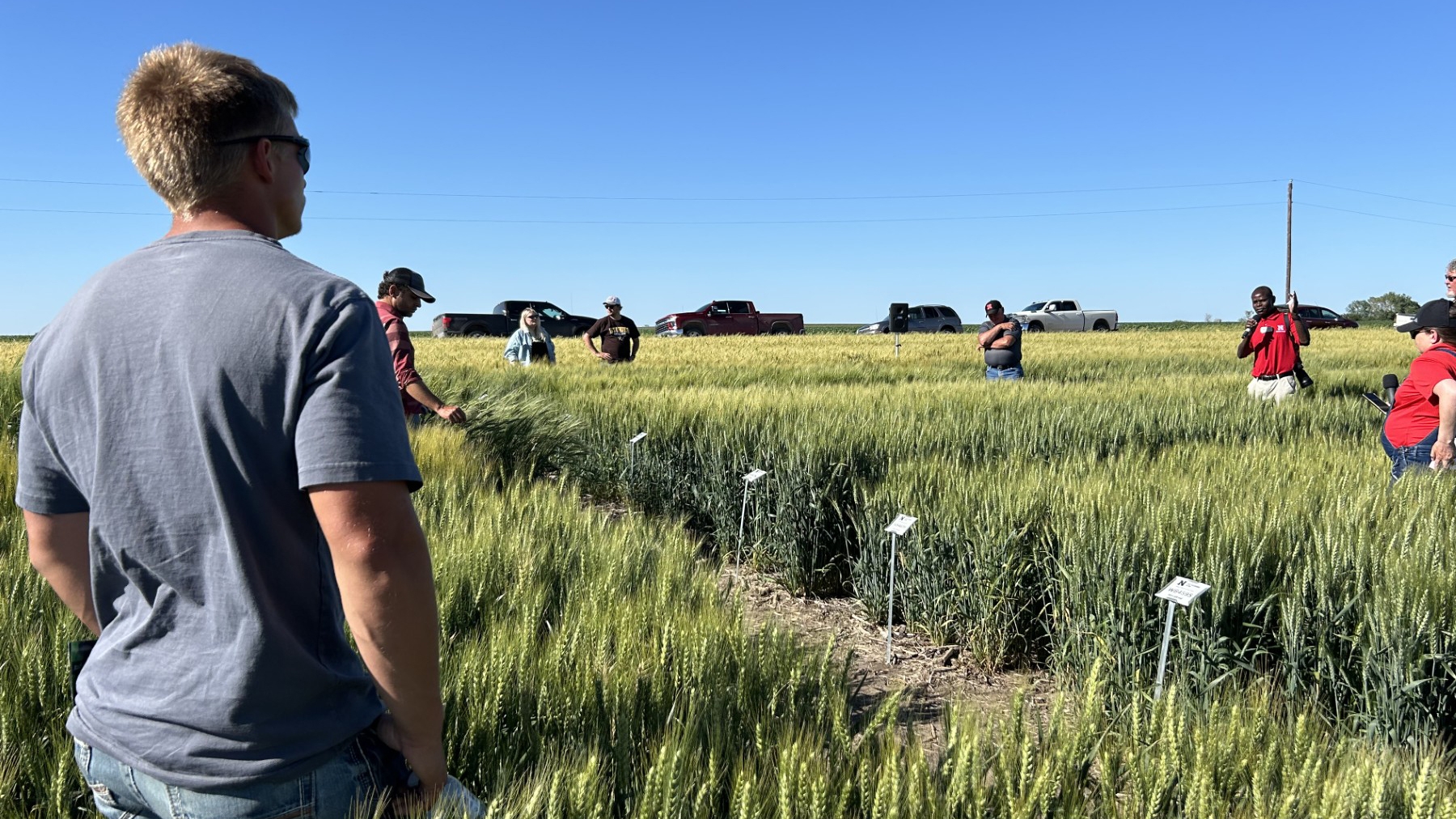Choices, choices, choices. There are an endless number of wheat varieties that can help producers reach their production goals. With some varieties standing out from the rest because of their low water requirement or high yield, whatever the goal, there is a specific wheat variety to reach it.
Wheat in eastern Nebraska has had the perfect storm of low temperatures and plenty of precipitation early this season to thrive. During an early-June Nebraska Extension wheat variety tour, wheat progress and condition at Knobel Seeds in Jefferson County were exceptional, thanks to the management practices of owner Mark Knobel, along with optimal weather so far.
“I've been to a lot of tours across the entire state the past two weeks, and this field has been managed extremely well,” said Pat Baxa, Polansky Seed representative. “You are not seeing a lot of pressure and disease here.”
At the 2024 tour, which included field events at farms in Jefferson, Banner, Deuel, Perkins, Box Butte, Furnas, Red Willow and Cheyenne counties, producers saw how different varieties fared in the field. These varieties spanned from wheat developed by the University of Nebraska-Lincoln, Agri Pro and Polansky Seed.

What wheat is right for you?
While there are different varieties available for different operational goals, here are some of the highlighted varieties that have found success in Nebraska, especially in the eastern part of the state:
AP Bigfoot. If wheat growers are looking for a leading yield potential variety, AP Bigfoot might be one to consider. This is a great choice if planting after soybeans, in addition to having an acidic soil tolerance.
“AP Bigfoot has very good tolerance for stripe rust,” said Matt Keating, Agri Pro representative. “What this means is if we have good yield potential and a fertility program, we can spray these last.”
To learn more about this variety, visit agriprowheat.com.
AP Prolific. AP Prolific is a variety with prolific production and potent traits. This variety has been found to have excellent leaf and stripe rust tolerance.
“This does well with more corn in a rotation that has a higher probability of scab on a year in and year out basis,” Keating said.
For more information about AP Prolific, visit agriprowheat.com.
Paradise. This variety is easy to seek out with its reddish color as the wheat matures. This high-yield-potential packaged wheat is the best through central Kansas into northern Oklahoma. The mill and bake quality are high in protein with excellent leaf volume.
To learn more about this variety, visit polanskyseed.com/wheat.
Golden Hawk. A new variety that has been released this year by Polansky seed, Golden Hawk is a medium maturity wheat variety that has a very good disease package. “If you do have corn residue, it would be one of the varieties you would prefer to look at,” Baxa said.
To learn more about this newly released variety, visit polanskyseed.com/wheat.
Ruth. This wheat variety is a product of the Nebraska Agricultural Experiment Station and the USDA Agricultural Research Service. It is a moderately late-maturity variety that reaches about 33 inches in height. Ruth is also resistant to soilborne wheat mosaic virus.
“This has been really a consistent performer, good test weight and really excellent protein,” said Katherine Freels, a UNL small grains breeder.
To learn more about the Ruth wheat variety, visit cropwatch.unl.edu.
NE Prism CLP. If producers are worried about fusarium head blight, the wheat variety NE Prism CLP might be the option for them. NU Horizon Genetics has recently answered the call from producers that are struggling with this in the Panhandle.
“It is an interesting phenotype; it looks like you are looking through a prism,” Freels said.
Wheat diseases on rise
While disease pressure is not apparent in Knobel’s wheat fields, it is important to keep an eye out for certain diseases that Extension specialists have seen recently in Nebraska.
Stripe rust is something producers might have faced in early April. with the added moisture and lower temperatures. When applying a fungicide, it is important to know the preharvest interval to avoid residue on the crop.
“The latest you can apply a fungicide on wheat is before 50% flowering,” said Stephen Wegulo, UNL plant pathologist. “After you apply, you have to wait 30 days if you apply past flowering.”

Wegulo also recommended applying the fungicide, if possible, after a rainfall when you know that stripe rust is in the area.
Another disease that has been on the rise in Nebraska is septoria. This fungal foliar disease is most likely to happen when there is excess rainfall and wheat residue still in the field.
“For foliar diseases like septoria, we usually recommend application to protect the flag leaf,” Wegulo said. “So, when it has emerged about 50% or 100%, then you go in and apply.”
To learn more about the winter wheat variety trials happening at UNL, visit cropwatch.unl.edu.